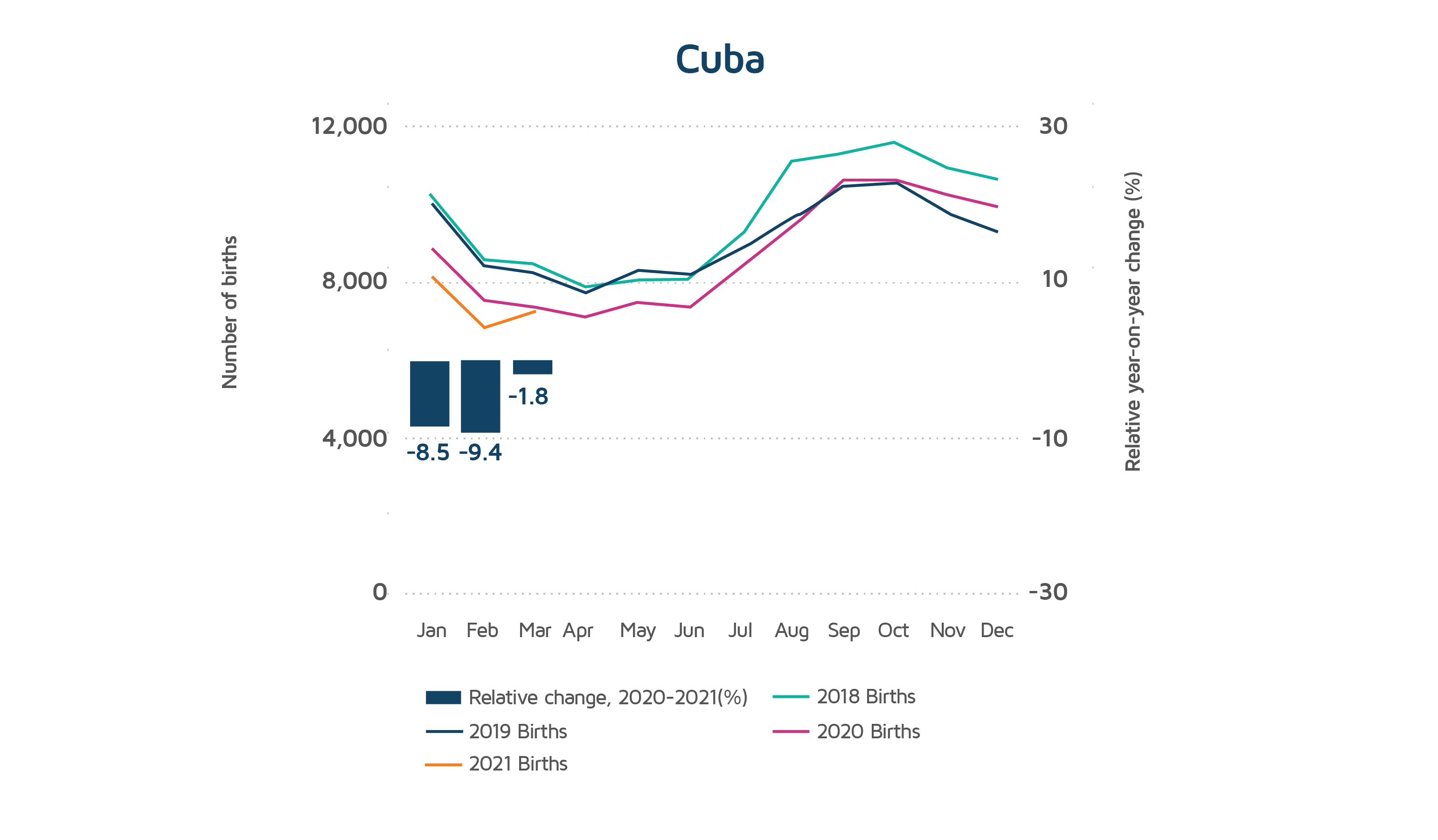With 3.7 million deaths worldwide and countries fighting the challenges brought about by the coronavirus, it is still uncertain how the pandemic will affect global fertility rates. While in many countries COVID-19 has caused a short-term decline in fertility, in some emerging economies, due to the lack of family planning services, the risk of unplanned pregnancies and births has risen according to a technical brief released by the United Nations Population Fund (UNFPA).
Historical overview
Public health issues and economic shocks are known to impact reproductive behavior. For instance, the Spanish flu (1918-1920) dramatically decreased the birth rate with the lowest rate being recorded six to nine months after the mortality peak of that pandemic. The Great Depression led to a drop in fertility rates in the USA from 2.5 in 1929 to 2.2 in 1939. In contrast, disruptions to sexual and reproductive health services and family planning systems may cause a sharp increase in the fertility rate. For example, during the 2014 peak of the Ebola epidemic in West Africa, the availability of family planning services dropped by 65% in Liberia, 51% in Guinea, and 23% in Sierra Leone. Later, in January 2016, Liberia witnessed a baby boom which was acknowledged to be the result of increased accidental pregnancies, the UNFPA brief noted.
Ups and downs of birth rate amid COVID-19 pandemic
According to the UNFPA, the USA, 19 EU member states, and two East Asian countries have recorded a severe drop in birth rates since October 2020 compared to the same period in 2019. As many as 15 EU Members registered sharp declines with a 3% drop documented in October, 5% in November, and 8.1% in December 2020. In January 2021, Spain reported that birth rates had fallen by 20% and France by 13.5%. In contrast, Denmark, Finland, the Netherlands, and Norway showed no evidence of any change.
In January 2021, the birth rate declined abruptly in certain U.S. states such as Florida and California by 7.2% and 10.5%, respectively. Likewise, the rate fell in Russia by 10.3% too.
Recent data from Thailand, Bangladesh, Peru, and Cuba has revealed that the pandemic may impact the birth rate in many different ways. For instance, in Thailand, as in many EU countries, evidence suggests a fertility downturn, with monthly births in January and February 2021 falling by 22.8% and 15.1%, respectively compared to the same months in 2020. In contrast, Bangladesh, with sharp fluctuations in the birth rate over time, has recorded an overall fertility rise so far in 2021.
Fig.1. Thailand and Bangladesh, birth tendency by month in 2018-2021 and relative birth rate change in 2021 compared to the same period in 20201
Peru recorded a 20% lower fertility rate in December 2020 and early 2021. In Cuba, however, the observed 8-9% decline in the birth rate in 2021 was also apparent in early 2020 and 2019 as well, long before the pandemic.
Fig.2. Peru and Cuba, birth tendency by month in 2018-2021 and relative birth rate change in 2021 compared to the same period in 2020
No room for worries yet
WHO has reported that 94% out of 135 countries experienced some sort of disruption to sexual and reproductive health care systems during the first quarter of 2021 while only 40% of countries declared interruptions to family planning and contraception services.
Despite the available figures, UNFPA noted in its technical brief that it is still too early to draw conclusions concerning the impact of the pandemic on the global birth rate.





